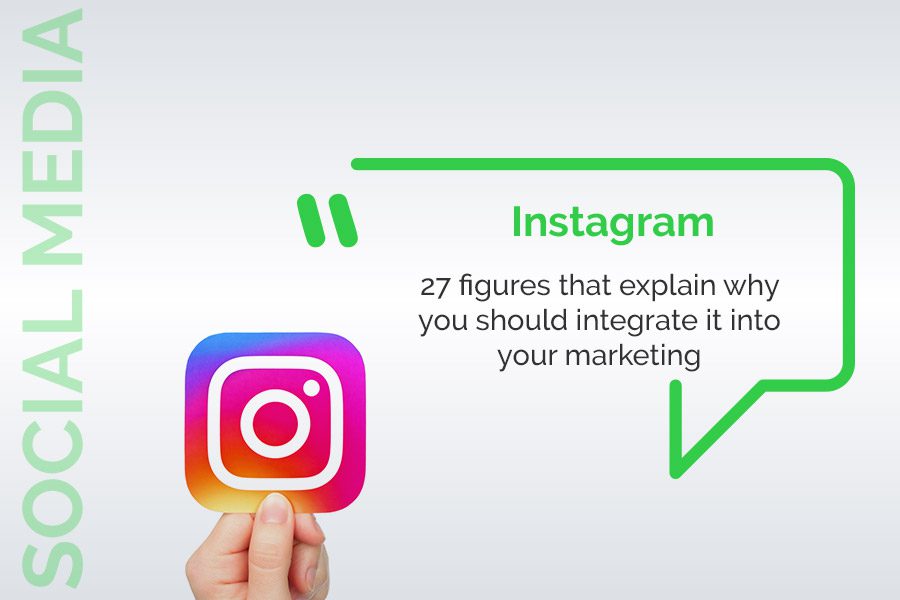
Instagram: 27 figures that explain why you should integrate it into your marketing
April 28, 2021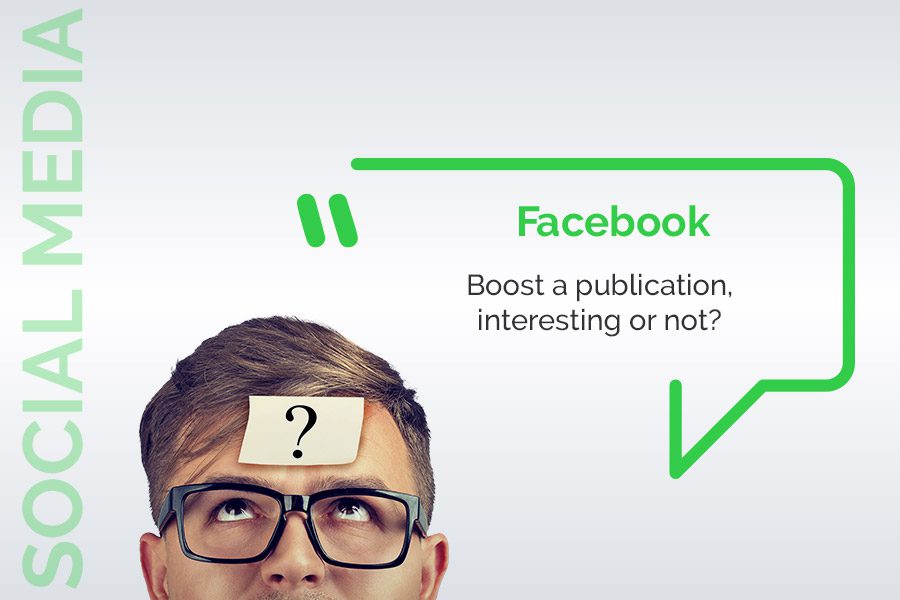
Boost a publication on Facebook, interesting or not?
May 21, 2021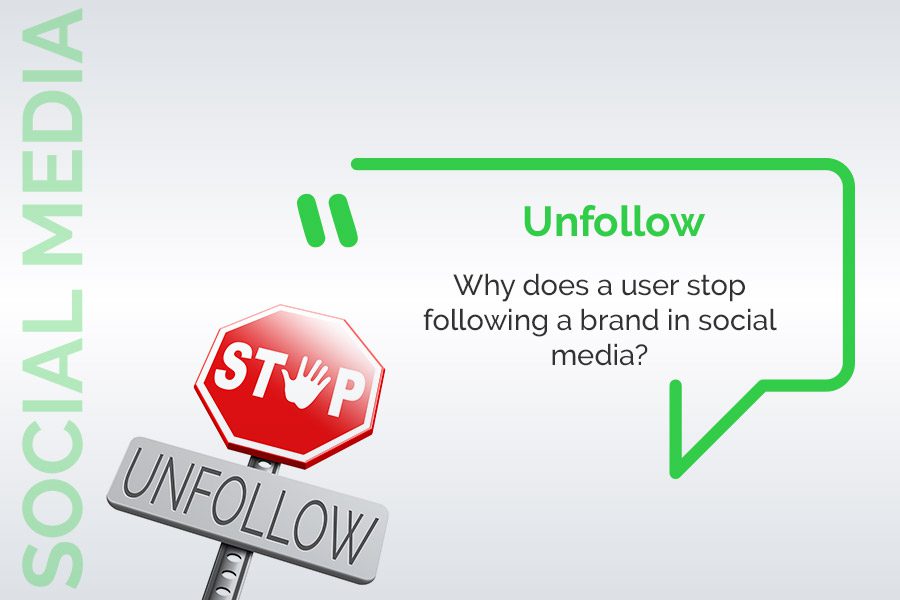

If it is fundamental to know the reasons that motivate people to subscribe to the social account of a brand or a company, it is equally important to look at the reasons that push these subscribers, sometimes dearly acquired, to unsubscribe.
Two recent studies (2020); the one by Sprout Social and the one conducted by BuzzStream and Fractl agencies, allow us to better understand and avoid them.
But first of all, why are we interested in this indicator?
The Sprout Social study points out the negative consequences that a drop in the number of subscribers can have for a company or a brand active on social networks (SN):
- 89% of consumers will buy from a brand they follow on SN.
- 75% will increase their spending with this same brand.
On its side, the BuzzStream and Fractl study highlights a data that shows that with millions of companies using them for their marketing, social networks are a space where the competition between brands to have visibility and attract subscribers is extremely lively:
- 50% of respondents followed only one to four brands on Facebook, LinkedIn and Twitter.
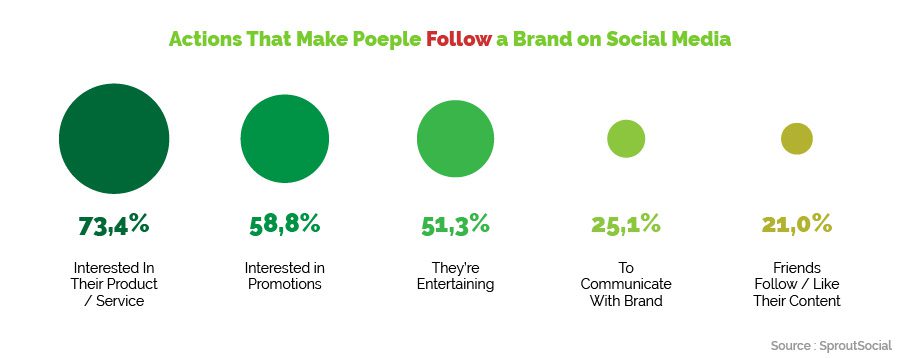
The 4 main reasons given for unsubscribing a brand in social media are:

Too much self-promotion.
Among the people surveyed, 46% said they would no longer follow a brand on social networks because of too much self-promotion.
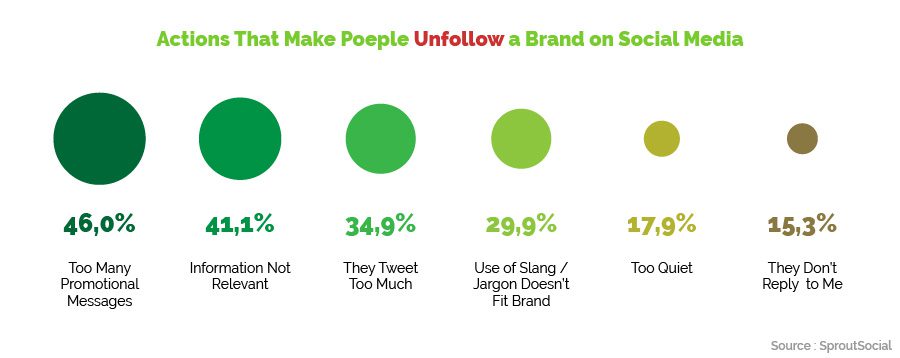
Obviously, someone who subscribes to a brand’s account expects the brand to promote itself. But massive self-promotion is clearly mentioned as the #1 justification for unsubscribing to a brand page.
Our advice:
1 – Social media is not an advertising delivery platform, it is first and foremost a conversation medium suitable for online social interactions. Ignoring this “social” dimension by only broadcasting advertising (paid ads are to be considered separately), is simply not understanding the role of social media for their users.
2 – Don’t forget that the first reason a person has to follow a page is that they “like” this brand or its products. This relationship must be reciprocal and communication on social media must serve to strengthen this link and not to give the impression to the subscribers of a page that they are just customers that must be regularly baited.

Uninteresting content.
Producing uninteresting and repetitive content is one of the major causes of unsubscribing:
- More than 20% of respondents say they would stop following a brand on Facebook and Twitter if they feel the content it posts is repetitive or uninteresting
- 15% say they would stop following a brand on Facebook, LinkedIn and Twitter if it posts more than six times a day.
- 45% of consumers do not follow brands because of irrelevant content or too many brand ads.
Our advice:
To satisfy your subscribers and therefore build loyalty, you should adopt a ratio in your publications such as, for example 80/20 or 66/33.
By limiting your promotional publications to 1 out of 5 or 1 out of 3 and by publishing more informative, educational or entertaining content, you balance your editorial line while keeping performance-oriented content for 20 to 33% of your publications.
The remaining 66-80% of your publications will be very useful to balance your editorial line and to reinforce the link between you and your subscribers (the famous social proof).
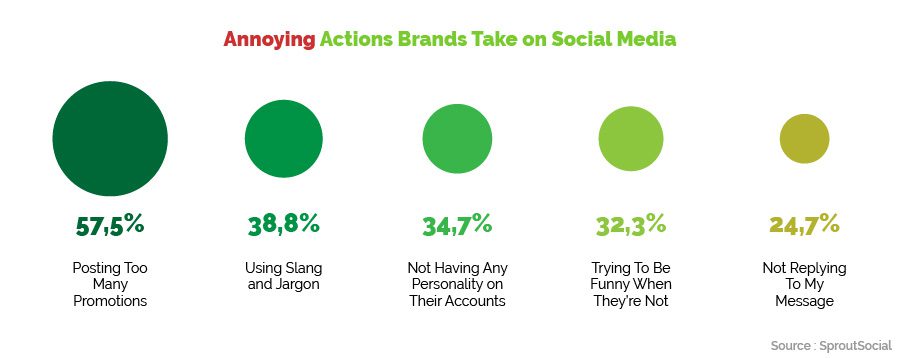
No clear editorial line
The editorial line of a brand account is its common thread, it is what will determine the way it will express itself on social media. It is made of different elements:
- Choice of social network
- Content strategy
- Frequency of publications
- Choice of tone and style
These elements must be thought out before creating a page, the coherence and quality of this editorial line will be the determining elements of brand awareness and social proof that we will see later.
A page without personality
If your profile is only filled with re-tweets or post sharing, automatically generated messages or out-of-context posts, don’t expect people to feel resonant with your brand.
Our advice:
Define your page’s mission and purpose before establishing your editorial line and content strategy on social media.
Using a poorly calibrated tone
And its variant; dabbling in humor when you don’t have any.
Our advice:
Choose a communication style that suits both your brand and your audience; nothing will confuse a Generation X audience more if you address them by speaking like a millennial. This step is also a parameter in the development of the editorial line.

The lack of engagement.
Engagement on social networks is not only the number of subscribers obtained by a Facebook page or the number of “likes” that its publications receive. It is also the number of people who interact with it by commenting or sharing its content.
These actions require more effort and therefore more “engagement” than the simple fact of adding a “like” on Facebook or a “fav” on Twitter. In marketing terms, they constitute “social proof”, i.e. the feeling that a person who decides to follow a page is doing so:
- Because the other people who follow this page have values in which they recognize themselves
- The brand carries values with which this person feels close.
Both studies confirm that the pages for which subscribers do not make these “efforts” are either pages that just do massive self-promotion or whose editorial line lacks personality, or those whose e-reputation is tainted:
- 16% said they would be unlikely to stop following a brand on social media if it attracted press for poor customer service.
- 35% believe that a brand that attracts press for poor customer service will not affect their decision to stop following it.
- 49% of consumers do not follow brands because of poor product or support quality and poor customer service.
Our advice:
Once again, be “social”, encourage interactions, there is no shortage of ways to get them: customer reviews, “like” and shares on social networks, testimonials and customer cases, even, if your budgets allow it, to use influencers.


Lack of responsiveness.
39% of respondents believe that brands should respond quickly on Facebook, while 36% of Twitter users think the same. 25% even expect a response within an hour of posting a comment on a brand’s Facebook or Twitter page.
Our advice:
The messaging on your social account, as well as the publication of comments under your posts, are central elements of your customer relationship on SN. They allow your subscribers to contact you without any filter, whether it’s to ask for information, to express dissatisfaction or to ask questions related to after-sales service. Your subscribers feel (since they are subscribers) the need to be taken into consideration and to get quick answers. Facebook’s conversational bots are a good way to provide them with quick answers, but here again, you have to be “social” and not let the bot manage the whole conversation. Indeed, according to Sprout Social, 30% of respondents say they would stop following a brand if they receive an automatic message.
Conclusion.
“Being social” and “social proof” have come up several times in this article. This is of course not a coincidence. The statistics we published in the article show that the practices that allow to respect the meaning of these expressions must indeed be placed at the heart of each step of your social media strategy.
As a digital marketing agency we can help you at every step of this strategy, so don’t hesitate to contact us.


